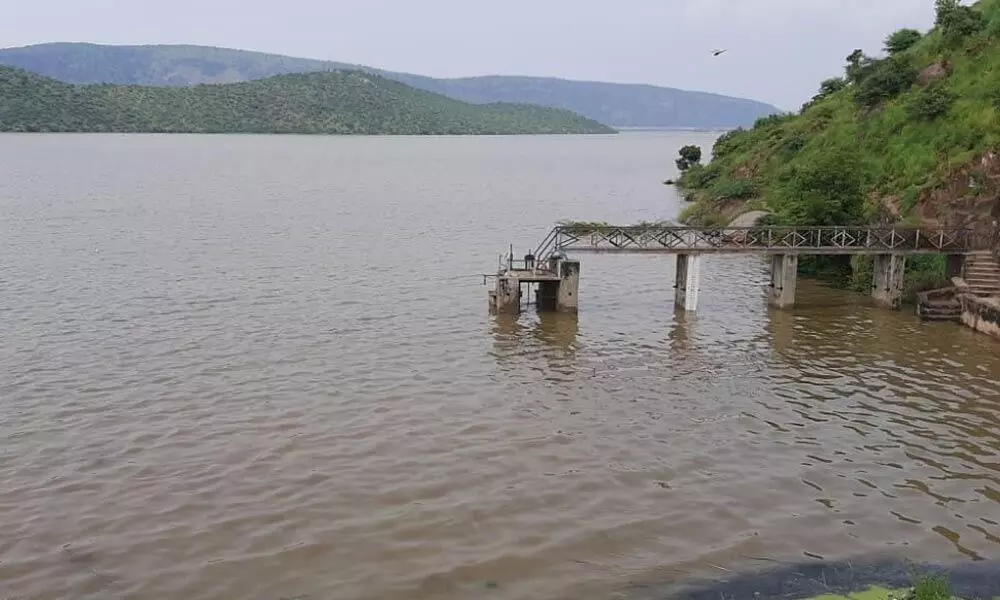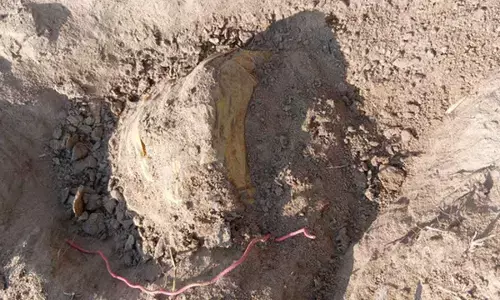Ongole: Cumbum Tank selected as World Heritage Irrigation Structure

Cumbum Tank selected as World Heritage Irrigation Structure
- The main objectives of recognition as Heritage Irrigation Structures are tracing the history of and understanding the evolution of irrigation in civilizations across the world
- As of now, only two structures, Sadarmatt Anicut on Godavari River at Khanapur mandal of Nirmal district, the Pedda Cheruvu on Manair in Kamareddy district of Telangana are recognised as the World Heritage Irrigation Structures from India
Ongole: The International Commission of Irrigation and Drainage (ICID) has selected the Cumbum tank as one of the World Heritage Irrigation Structures, announced the Cumbum Irrigation DEE Venkateswarlu on Tuesday.
The International Commission of Irrigation and Drainage, which celebrated its 70th Foundation Day on June 24, 2020, is recognising the historical irrigation structures in the lines of World Heritage Sites as recognized by the UNESCO, since 2012.
As of now, it has recognized 95 structures throughout the world including 39 structures from Japan and 19 from China. As of now, only two structures, Sadarmatt Anicut on Godavari River at Khanapur mandal of Nirmal district, the Pedda Cheruvu on Manair in Kamareddy district of Telangana are recognised as the World Heritage Irrigation Structures from India.
The ICID announced that the main objectives of recognition as Heritage Irrigation Structures are tracing the history of and understanding the evolution of irrigation in civilizations across the world. It also aims to select and collect information on historical irrigation structures from around the world, understand their significant achievements and gather knowledge about the unique features that have sustained the project for such a long period besides learning the philosophy and wisdom on sustainable irrigation from these structures, and to protect and preserve the historical irrigation structures.
For the year 2020, the ICID selected four structures from India, of which three are from Andhra Pradesh. The commission selected the Porumamilla tank in YSR Kadapa, Cumbum tank in Prakasam, KC Canal flowing through Kurnool and YSR Kadapa districts from Andhra Pradesh along with the Dhamapur tank in Maharashtra as the World Heritage Irrigation Structures.
The Cumbum tank, which was constructed over 500 years ago, and Gundlakamma river is the feeder for the tank. The tank is about 7 kilometres in length and 3.5 kilometres in width and serves 10300 acres of ayacut.
The Cumbum tank is known in history as the second-largest irrigation tank in Asia.
The Cumbum irrigation DEE Venkateswarlu said that the Irrigation department sent the nominations to the Central Water Commission for the recognition of the structures, which forwarded the applications to ICID. He said that the tank is constructed at the meeting point of Jumpaleru and Gundlakamma rivers and is supplying water to nearly 7000 acres, even in drought conditions.
Woman injured in stabbing attack in Tokyo, suspect at large
Bengal cop booked for murder over mysterious death of woman home guard, SIT to probe case
Staffer recalls horror of 7-kg gold robbery by armed gang in Karnataka’s Hunsur
25-Year-Old Airline Cabin Crew Member Dies At Gurugram Party; Police Begin Investigation

















